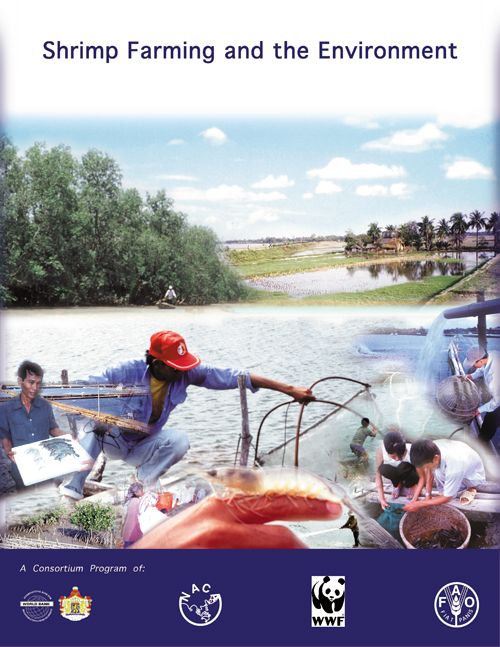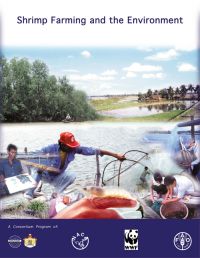Code of good management practices for shrimp aquaculture in Sri Lanka (abstract)
23 November 2003 | P.G.S.N. Siriwardena and R. Willman | 1386 Downloads | .pdf | 13.85 KB | Better management practices, Governance and Policy, Shrimp, Sri Lanka, Environment and Sustainability
Environmental and social issues associated with shrimp aquaculture development in coastal areas have been addressed in various international meetings organised by industry, governments and international organisations, including the Bangkok FAO Technical Consultation on Policies for Sustainable Shrimp Culture. This meeting produced an important consensus “that sustainable shrimp culture is practiced and is a desirable and achievable goal which should be pursued”. The Network of Aquaculture Centres in AsiaPacific (NACA) is supporting countries in the Asian region in the development and implementation of better management practices in shrimp aquaculture through its 2nd Five-year Work Programme. Shrimp aquaculture industry in Sri Lanka grew slowly towards the latter part of 1980’s and expanded rapidly during the first half of 1990’s. It is believed that this rapid expansion of the industry with the proliferation of small-scale farms without a proper license created environmental problems including deterioration of pond environmental quality as well as deterioration of water quality in the water sources leading to epidemics and heavy production losses and user conflicts. The government of Sri Lanka requested the FAO for technical assistance during the crisis of White Spot Syndrome Virus (WSSV) epidemic in 1996. The TCP/SRL/6614-Disease prevention and health management in coastal shrimp culture came as an urgent technical assistance project with components of training and extension, development of disease diagnosis facilities and research to establish principle routes of infection. Based on the results of this work at a later stage a technical guide was prepared to prevent epidemics in the shrimp aquaculture industry.
There is a difficulty for small-scale farmers to adhere to the technical guide. Main difficulty is reluctance to accommodate treatment ponds from their production area due to limited area available. It is well accepted that the implementation of good management practices is not feasible only through laws and regulations. It is feasible through a self-management strategy to develop a code of good management practices. Development of a code of good management practices based on the elaboration and expansion of the available technical guidelines and on the FAO Code of Conduct for responsible Fisheries and associated guidelines on aquaculture development and integration of fisheries into coastal area management is needed to address the sustainable issue of shrimp aquaculture in Sri Lanka.
The Code development work was undertaken by the NARA in collaboration with the NAQDA, MFNWP, PEA, Shrimp Farmers and Exporters Associations, Shrimp Breeders Association, feed suppliers and manufacturers. This was developed mainly conducting consultations with different stakeholders of the industry and discussed at a forum with the representation of all stakeholders to reach consensus. The code includes the following in the code of good management practice for shrimp aquaculture.
Technical specifications for the siting, design, construction and operation of shrimp hatcheries and farms. Standards for shrimp feed quality, chemicals and other additives used in the industry and the responsibilities of suppliers to provide truthful information to farmers. The commitment by farmers’ groups and associations and the industry federation to encourage the implementation of the code of best practices among their members as well as among non-members and to facilitate monitoring of farming practices and adherence to the code of best practices by all farmers through the competent government authorities. The commitment by government agencies to raise the farmers’ awareness about the code of best practices and encourage and actively support its implementation. The commitment by government agencies to seek to it that farmers adhere to all necessary laws and regulations in a willful manner.
The commitment by non-governmental organisations to assist in the implementation of the code of best practices through awareness creation, education and training as well as by monitoring code of best practices implementation.
Special emphasis was made to develop a draft strategy paper to involve the small-scale farmer to adhere to the code. This special emphasis on the small-scale farmaer was needed as they face difficulties in obtaining licenses and practicing good management practice.
The cost of production/crop with good management practices is 21.5% higher than that of without GMP's. However, the production cost/kg with good management practices is 17.6% less than that of without good management practices due to higher production rate.
Copyright, all rights reserved.

